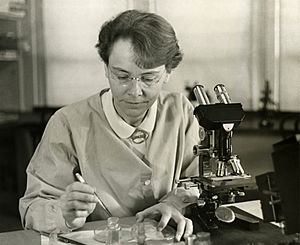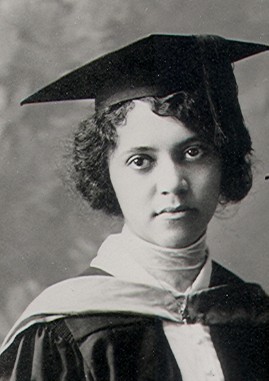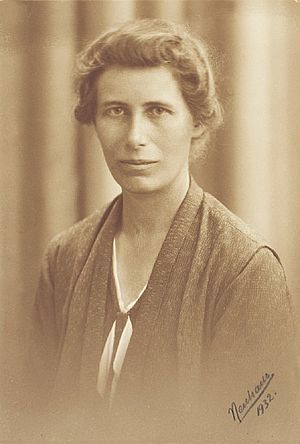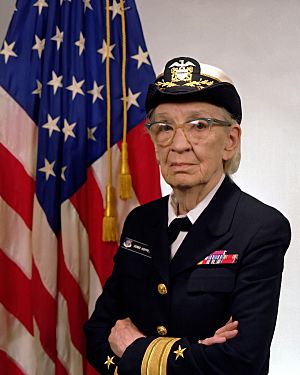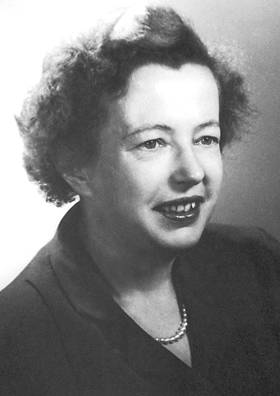List of female scientists in the 20th century facts for kids
This article is about amazing women scientists who worked in the 20th century. Back then, it was quite rare for women to work in science. They often faced challenges getting into universities and scientific groups. However, during this time, a movement for women's rights began to help break down many of these barriers, opening doors for these brilliant minds.
Contents
- Anthropology: Studying People and Cultures
- Archaeology: Digging Up the Past
- Astronomy: Exploring the Cosmos
- Biology: The Study of Life
- Chemistry: Understanding Matter
- Geology: Earth's Storytellers
- Mathematics and Computer Science: Logic and Code
- Engineering: Building the Future
- Medicine: Healing and Health
- Physics: The Laws of the Universe
- Psychology: Understanding the Mind
- Images for kids
Anthropology: Studying People and Cultures
Anthropology is the study of humans, their societies, cultures, and how they developed. These women helped us understand different ways of life.
- Heloísa Alberto Torres (1895 – 1977) was a Brazilian anthropologist and museum director.
- Ruth Benedict (1887–1948) was an American anthropologist who studied cultures.
- Zora Neale Hurston (1891–1960) was an American folklorist and anthropologist, known for her studies of African-American culture.
- Margaret Mead (1901–1978) was a famous American anthropologist. She studied different cultures, especially in the South Pacific.
- Mildred Trotter (1899–1991) was an American forensic anthropologist. She helped identify human remains.
Archaeology: Digging Up the Past
Archaeology is about studying human history by digging up and analyzing old objects and sites. These women helped uncover secrets from ancient times.
- Birgit Arrhenius (born 1932) is a Swedish archaeologist.
- Dorothea Bate (1878–1951) was a British archaeologist who was a pioneer in studying animal bones from archaeological sites.
- Juliet Clutton-Brock (1933–2015) was a British archaeologist who focused on ancient domestic animals.
- Rosemary Cramp (born 1929) is a British archaeologist who studied the Anglo-Saxons in Britain.
- Dorothy Garrod (1892–1968) was a British archaeologist who specialized in the Stone Age.
- Marija Gimbutas (1921–1994) was a Lithuanian archaeologist known for her ideas about ancient European cultures.
- Kathleen Kenyon (1906–1978) was a British archaeologist famous for her work on ancient cultures in Egypt and Mesopotamia.
- Mary Leakey (1913–1996) was a British archaeologist who discovered important early human fossils.
- Margaret Murray (1863–1963) was a British-Indian Egyptologist and the first woman to teach archaeology in the UK.
- Bertha Parker Pallan (1907–1978) was the first Native American female archaeologist.
- Tatiana Proskouriakoff (1909–1985) was a Russian-American archaeologist who helped figure out ancient Maya writing.
- Margaret Rule (1928–2015) was a British archaeologist who led the excavation of the Mary Rose, a famous Tudor warship.
Astronomy: Exploring the Cosmos
Astronomy is the study of stars, planets, and everything in space. These women looked up at the sky and made incredible discoveries.
- Claudia Alexander (1959–2015) was an American planetary scientist.
- Margaret Burbidge (1919–2020) was a British astrophysicist.
- Jocelyn Bell Burnell (born 1943) is a Northern Irish-British astrophysicist who co-discovered pulsars.
- Annie Jump Cannon (1863–1941) was an American astronomer who classified hundreds of thousands of stars.
- Sandra Faber (born 1944) is an American astronomer known for her work on how galaxies form.
- Henrietta Leavitt (1868–1921) was an American astronomer who discovered a way to measure distances in space.
- Carolyn Porco (born 1953) is an American planetary scientist who worked on missions to Saturn.
- Cecilia Payne-Gaposchkin (1900–1978) was a British-American astronomer who discovered what stars are made of.
- Vera Rubin (1928–2016) was an American astronomer who found strong evidence for dark matter.
- Jill Tarter (born 1944) is an American astronomer who searches for intelligent life in space.
Biology: The Study of Life
Biology is the science of life and living things. These women studied everything from tiny cells to large animals.
- June Almeida (1930–2007) was a British virologist who helped discover the first human coronavirus.
- Denise P. Barlow (1950–2017) was a British geneticist.
- Linda B. Buck (born 1947) is an American neuroscientist who won a Nobel Prize for her work on how we smell.
- Rachel Carson (1907–1964) was an American marine biologist and conservationist. Her book Silent Spring raised awareness about pesticides.
- Gerty Theresa Cori (1896–1957) was an American biochemist who won a Nobel Prize for her work on how the body uses sugar.
- Sylvia Earle (born 1935) is an American marine biologist and oceanographer, known for her deep-sea exploration.
- Dian Fossey (1932–1985) was an American zoologist who studied mountain gorillas in Africa.
- Birutė Galdikas (born 1946) is a German primatologist who studies orangutans.
- Jane Goodall (born 1934) is a British biologist and primatologist, famous for her long-term study of chimpanzees.
- Barbara McClintock (1902–1992) was an American geneticist who won a Nobel Prize for discovering "jumping genes."
- Rita Levi-Montalcini (1909–2012) was an Italian neurologist who won a Nobel Prize for discovering growth factors.
- Christiane Nüsslein-Volhard (born 1942) is a German geneticist who won a Nobel Prize for her work on how genes control development.
Chemistry: Understanding Matter
Chemistry is the study of matter and how it changes. These women made important discoveries about chemicals and materials.
- Alice Ball (1892–1916) was an American chemist who developed a treatment for leprosy.
- Maria Skłodowska-Curie (1867–1934) was a Polish-French chemist and physicist. She was a pioneer in radioactivity research and discovered two new elements, polonium and radium. She won two Nobel Prizes!
- Gertrude B. Elion (1918–1999) was an American biochemist who won a Nobel Prize for developing new medicines.
- Rosalind Franklin (1920–1957) was a British physical chemist who made key contributions to understanding the structure of DNA.
- Dorothy Crowfoot Hodgkin (1910–1994) was a British crystallographer who won a Nobel Prize for figuring out the structures of important biochemical substances like penicillin and vitamin B12.
- Irène Joliot-Curie (1897–1956) was a French chemist and nuclear physicist, and Marie Curie's daughter. She won a Nobel Prize for her work on artificial radioactivity.
- Stephanie Kwolek (1923–2014) was an American chemist who invented Kevlar, a super strong material used in bulletproof vests.
- Kathleen Lonsdale (1903–1971) was a British crystallographer who used X-rays to study crystal structures.
- Patsy Sherman (1930–2008) was an American chemist who co-invented Scotchgard, a stain repellent.
- Ada Yonath (born 1939) is an Israeli crystallographer who won a Nobel Prize for her work on ribosomes.
Geology: Earth's Storytellers
Geology is the study of Earth's physical structure, history, and processes. These women helped us understand our planet.
- Zonia Baber (1862–1955) was an American geographer and geologist.
- Moira Dunbar (1918–1999) was a Scottish-Canadian glaciologist who studied ice.
- Inge Lehmann (1888–1993) was a Danish seismologist who discovered that Earth has a solid inner core.
- Marcia McNutt (born 1951) is an American geophysicist.
- Marie Tharp (1920–2006) was an American geologist and cartographer who helped map the ocean floor and discovered the Mid-Atlantic Ridge.
- Alice Wilson (1881–1964) was a Canadian geologist and paleontologist.
Mathematics and Computer Science: Logic and Code
These women excelled in the fields of numbers, logic, and the early days of computing.
- Anita Borg (1949–2003) was an American computer scientist who founded an institute to support women in technology.
- Mary L. Cartwright (1900–1998) was a British mathematician.
- Ingrid Daubechies (born 1954) is a Belgian mathematician known for her work on wavelets.
- Evelyn Boyd Granville (1924–2023) was one of the first African-American women to earn a PhD in mathematics.
- Margaret Hamilton (born 1936) is an American computer scientist who helped write the software for the Apollo space missions.
- Betty Holberton (1927–2001) was an American computer programmer, one of the original programmers of the ENIAC computer.
- Grace Hopper (1906–1992) was an American computer scientist and Navy admiral. She was a pioneer in computer programming and helped develop early programming languages.
- Barbara Liskov (born 1939) is an American computer scientist known for her work in programming languages.
- Rózsa Péter (1905–1977) was a Hungarian mathematician.
- Karen Sparck Jones (1935–2007) was a British computer scientist who did important work in information retrieval.
- Dorothy Vaughan (1910–2008) was an American mathematician who worked at NASA during the early space race.
- Maryam Mirzakhani (1977–2017) was an Iranian mathematician and the first woman to win the Fields Medal, a top award in mathematics.
- Karen Uhlenbeck (born 1942) is an American mathematician who founded modern geometric analysis.
Engineering: Building the Future
Engineering is about designing, building, and maintaining structures, machines, and systems. These women helped shape the world around us.
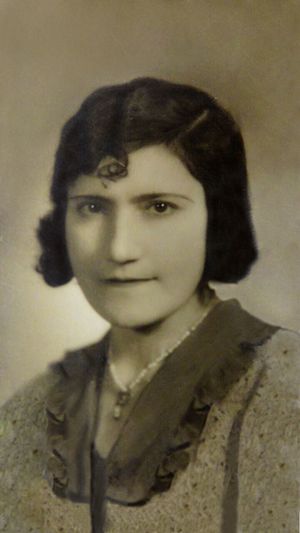
- Zhenan Bao (born 1970) is an American chemical engineer and materials scientist.
- Nance Dicciani (born 1947) is an American chemical engineer.
- Kate Gleason (1865–1933) was an American engineer.
- Elsie MacGill (1907–1980) was the first Canadian female engineer.
- Florence Violet McKenzie (1890 or 1892–1982) was the first female electrical engineer in Australia.
- Concepción Mendizábal Mendoza (1893–1985) was the first female civil engineer in Mexico.
- Molly Shoichet is a Canadian biomedical engineer.
Medicine: Healing and Health
Medicine is the science and practice of diagnosing, treating, and preventing illness. These women made significant contributions to health.
- Virginia Apgar (1909–1974) was an American doctor who created the Apgar score, a test used to check the health of newborns.
- Roberta Bondar (born 1945) is a Canadian astronaut and doctor, specializing in space medicine.
- Dorothy Lavinia Brown (1919–2004) was an American surgeon.
- Margaret Chan (born 1947) is a Chinese-Canadian health administrator who used to lead the World Health Organization.
- Antonia Novello (born 1944) is a Puerto Rican physician who became the Surgeon General of the United States.
- Velma Scantlebury (born 1955) is the first woman of African descent to become a transplant surgeon in the U.S.
- Helen Rodríguez Trías (1929–2001) was a Puerto Rican-American pediatrician and a strong supporter of women's health rights.
- Elsie Widdowson (1908–2000) was a British nutritionist who studied how food affects our bodies.
- Fiona Wood (born 1958) is a British-Australian plastic surgeon known for her work with burn victims.
Physics: The Laws of the Universe
Physics is the study of matter, energy, and how they interact. These women explored the fundamental laws of the universe.
- Faye Ajzenberg-Selove (1926–2012) was an American nuclear physicist.
- Betsy Ancker-Johnson (1927–2020) was an American plasma physicist.
- Harriet Brooks (1876–1933) was a Canadian radiation physicist.
- Esther Conwell (1922–2014) was an American physicist who studied semiconductors.
- Mildred Dresselhaus (1930–2017) was an American physicist known for her work on carbon materials like graphite and nanotubes.
- Joan Feynman (1927–2020) was an American space physicist.
- Maria Goeppert-Mayer (1906–1972) was a German-American physicist who won a Nobel Prize for her model of the atomic nucleus.
- Shirley Jackson (born 1946) is an American nuclear physicist and the first African-American woman to earn a doctorate from MIT.
- Margaret G. Kivelson (born 1928) is an American space physicist and planetary scientist.
- Lise Meitner (1878–1968) was an Austrian nuclear physicist who helped discover nuclear fission.
- Emmy Noether (1882–1935) was a German mathematician and theoretical physicist who made important discoveries about symmetries and conservation laws.
- Lisa Randall (born 1962) is an American physicist known for her work on theoretical particle physics.
- Chien-Shiung Wu (1912–1997) was a Chinese-American physicist who made groundbreaking discoveries in nuclear physics.
- Rosalyn Sussman Yalow (1921–2011) was an American medical physicist who won a Nobel Prize for developing a technique to measure tiny amounts of substances in the body.
Psychology: Understanding the Mind
Psychology is the scientific study of the mind and behavior. These women helped us understand how people think and feel.
- Mary Ainsworth (1913–1999) was an American-Canadian developmental psychologist known for her work on attachment theory in children.
- Martha E. Bernal (1931–2001) was the first Latina to receive a psychology PhD in the United States.
- Nise da Silveira (1905–1999) was a Brazilian psychiatrist who reformed mental health care.
- Mamie Clark (1917–1983) was an African-American psychologist who did important research used in the civil rights movement.
- Margaret Kennard (1899–1975) was an American researcher who studied how brain damage affects different ages, showing how the brain can adapt.
- Nora Volkow (born 1956) is a Mexican-American psychiatrist who directs the National Institute on Drug Abuse.
Images for kids
- Index of women scientists articles
- List of female mathematicians
- List of female Nobel laureates
- Women in computing
- Women in engineering
- Women in geology
- Women in medicine




